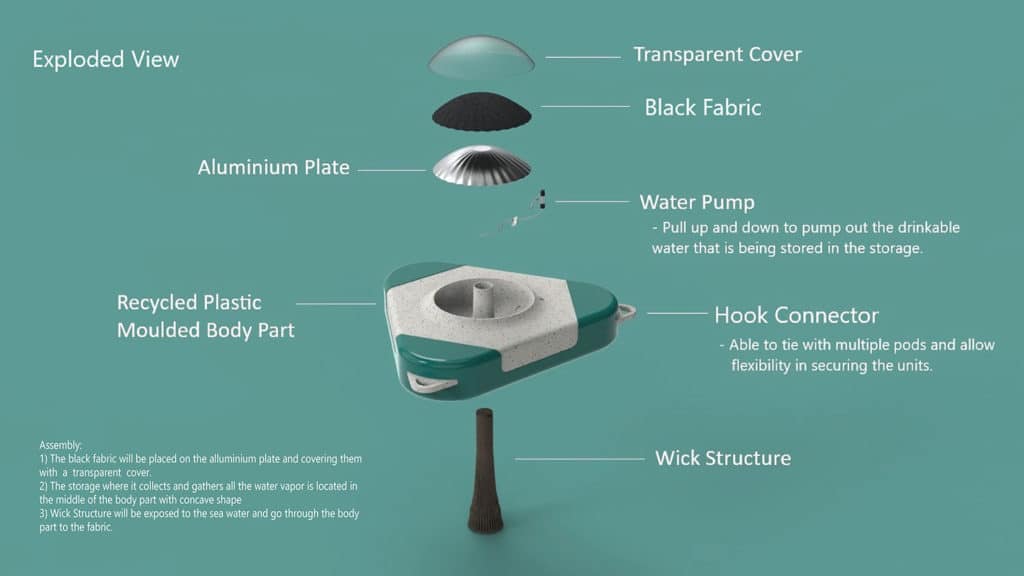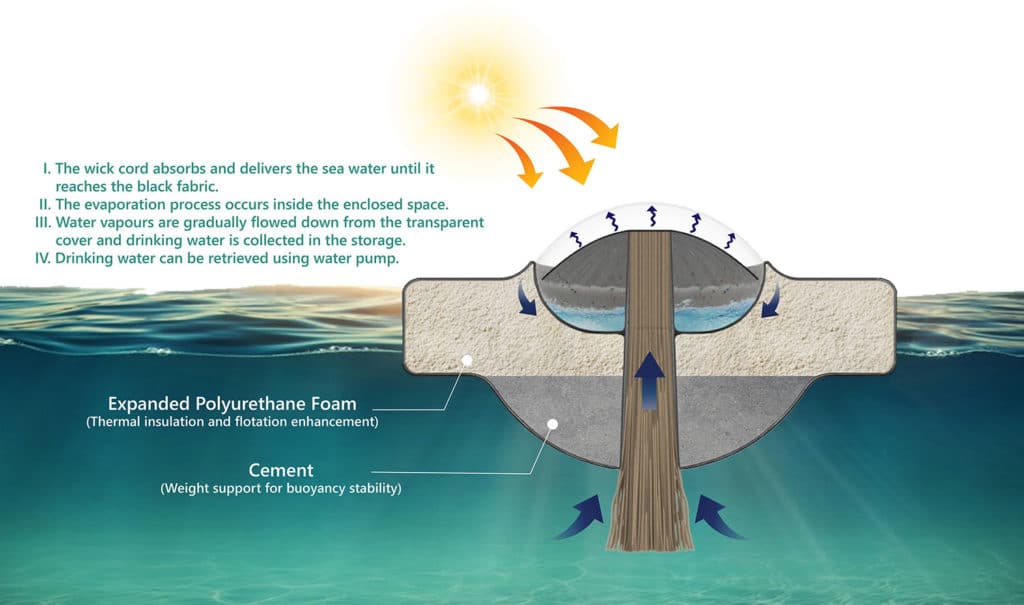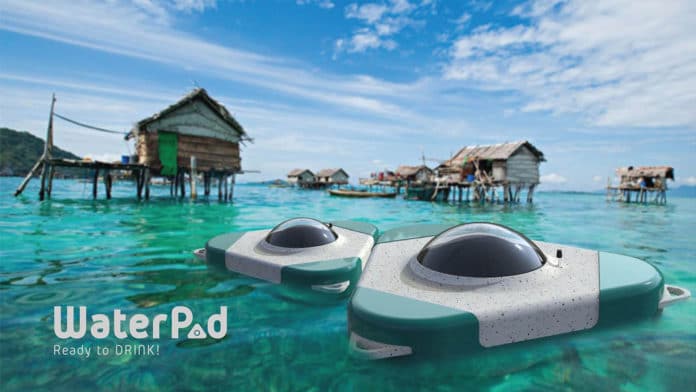While a majority of the world’s surface is covered in water, only a tiny fraction of that is drinkable. This makes water desalination a highly potential method to retrieve drinkable water; however, the process is very expensive.
The James Dyson Award recently recognized a team of Malaysian designers for their sustainable desalination pod concept called WaterPod that works on solar distillation to convert seawater into drinkable water. Developed by Bennie Beh Hue May, Yap Chun Yoon, and Loo Xin Yang, the WaterPod is designed to be floated at sea, and therefore accessible to sea nomads.

It works on a self-cleaning solar desalination system that uses a wick structure to absorb seawater from underneath and transport it to the black fabric placed on top of the aluminum plate. As the sunlight passes through the transparent cover, the seawater evaporates from the fabric onto the dome cover.
The aluminum plate is designed in semi-spherical to increase the surface area of water spreading across the black fabric and causes the seawater to evaporate faster while leaving the contaminant behind. With the cooling ambient air around the cover, water vapors are then easily formed into droplets through the process of condensation. The ocean’s waves will create the energy needed to shake the vapor collected on the dome, and the water droplets will then flow efficiently into the storage below and be able to retrieve through a water pump system.

The desalination pod will function as a cost-effective alternative to existing desalination plants. To tackle plastic pollution at the same time, the proposed full-scale WaterPods themselves would be made of recycled plastic waste collected from the oceans. The inner is filled with expanded polyurethane foam that acts as thermal insulation and flotation enhancement, while the bottom dome is filled with cement to increase the weight stability.
The self-cleaning salt rejection wick structure is derived from a mangrove tree to avoid the concentrated brine waste from disturbing the ecosystem of marine life. And the semi-spherical aluminum plate is derived from mushroom texture is to increase the surface area for faster evaporation.
Next, the team of designers plans to verify the effectiveness of WaterPod in terms of practicality and manufacturing issues and obtain funding from any interested parties to allocate into further research and development.
